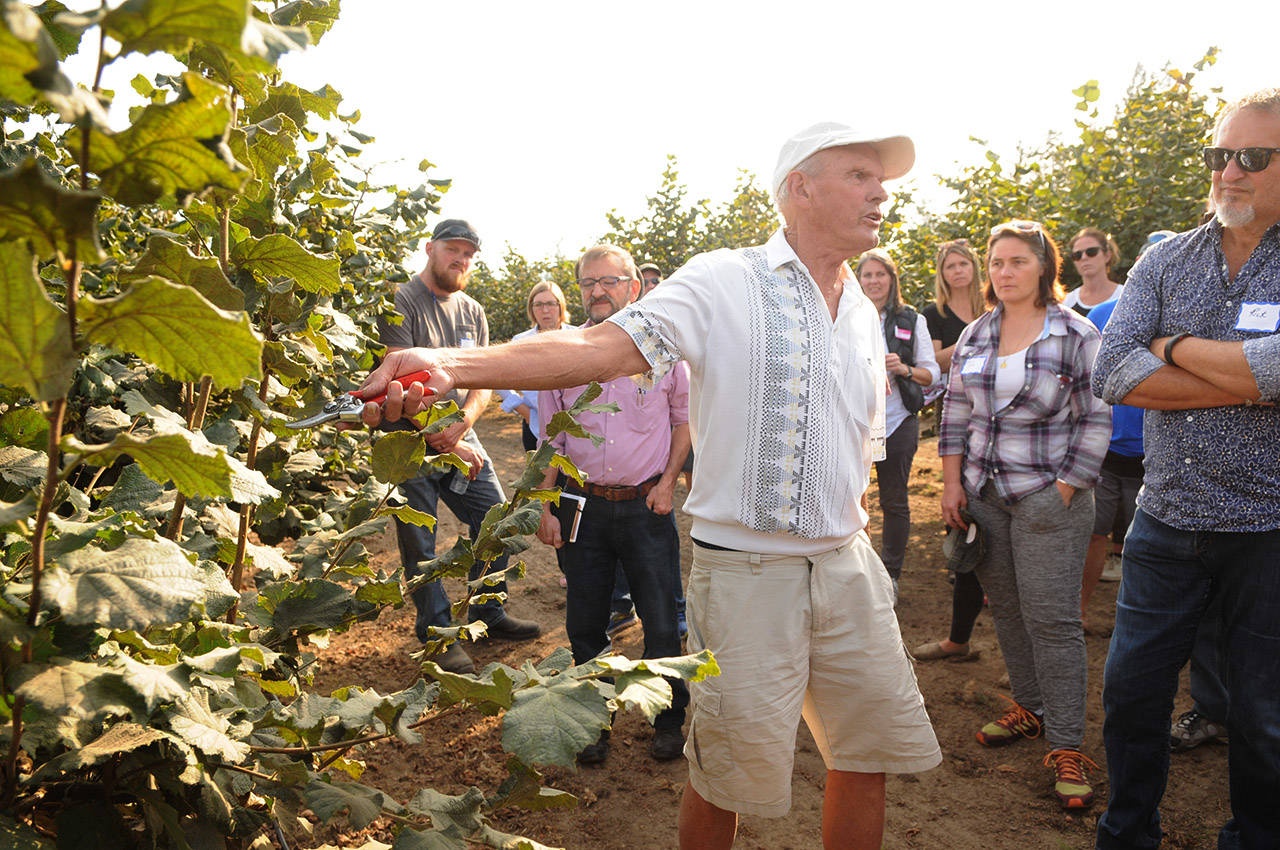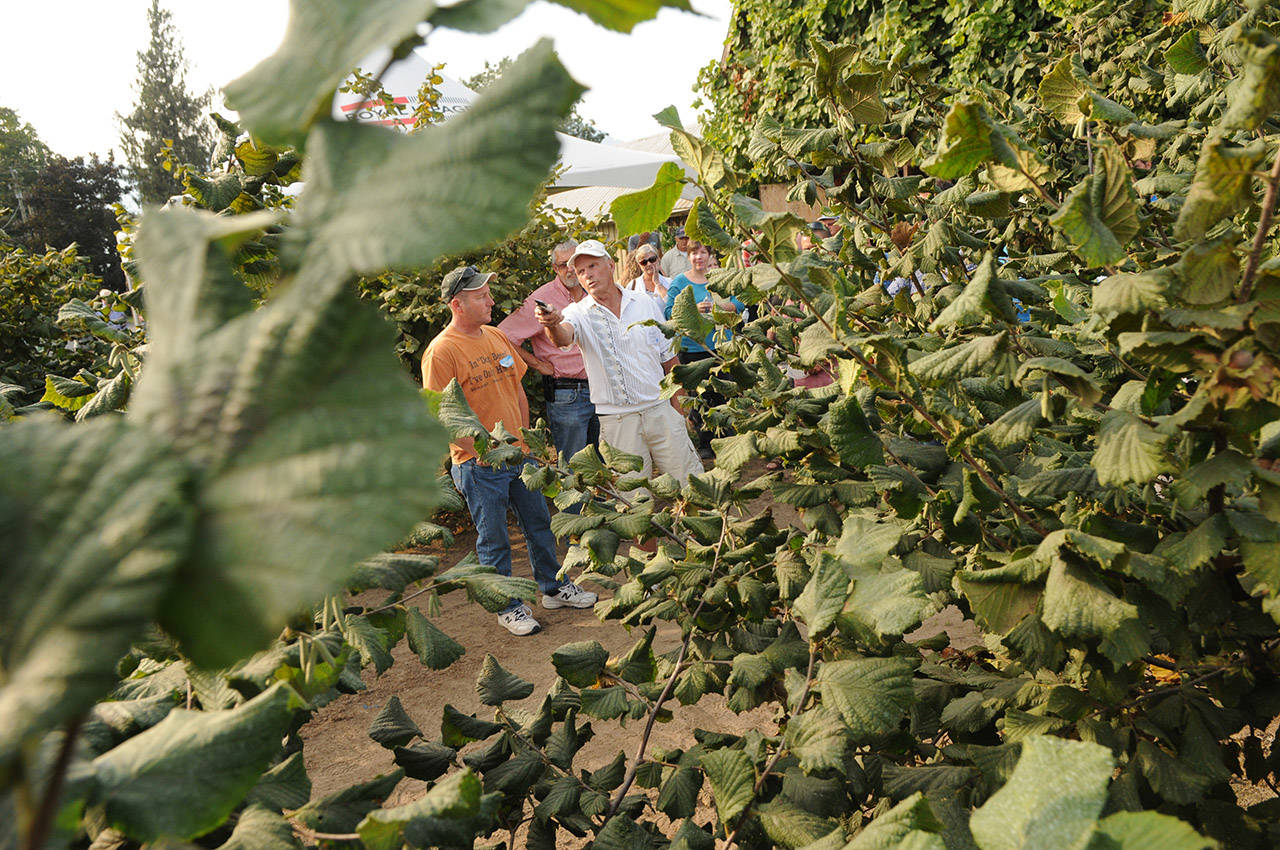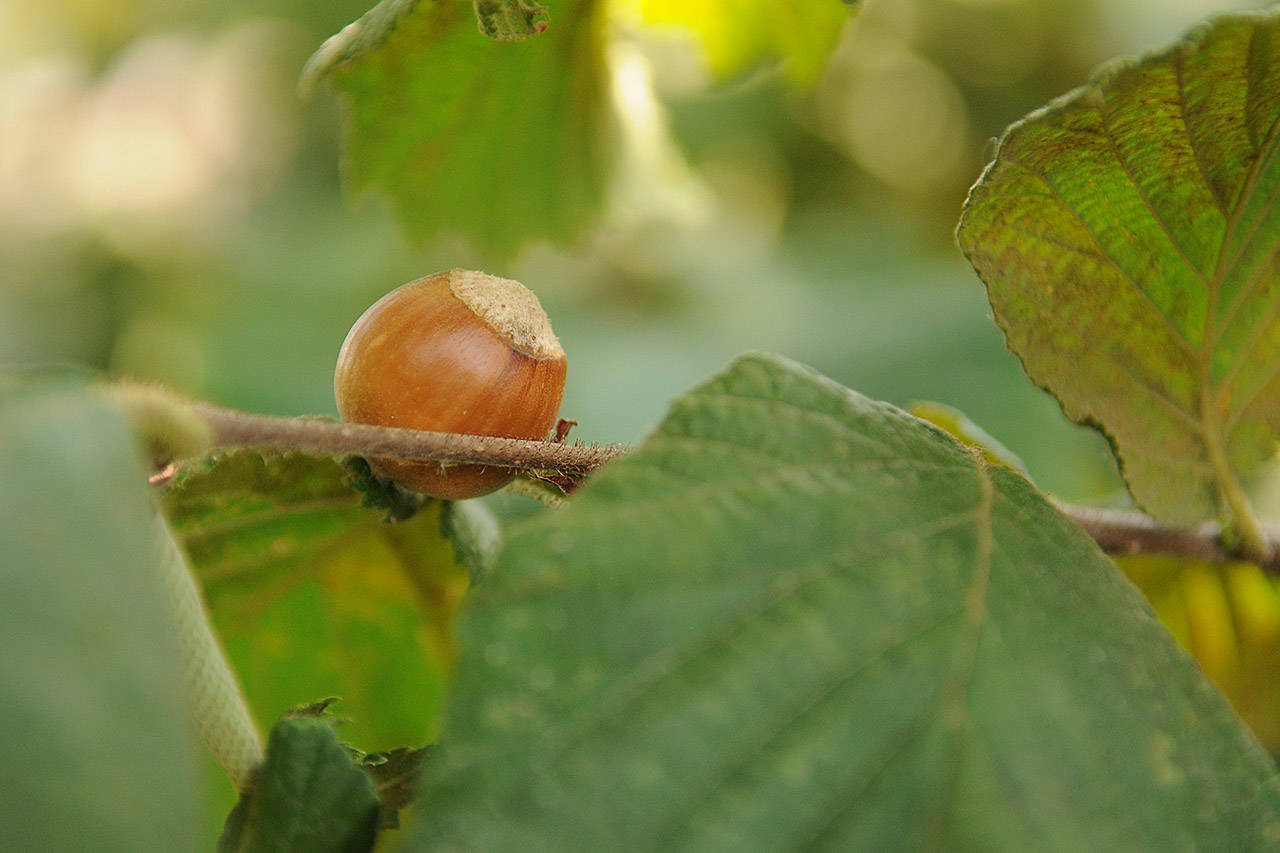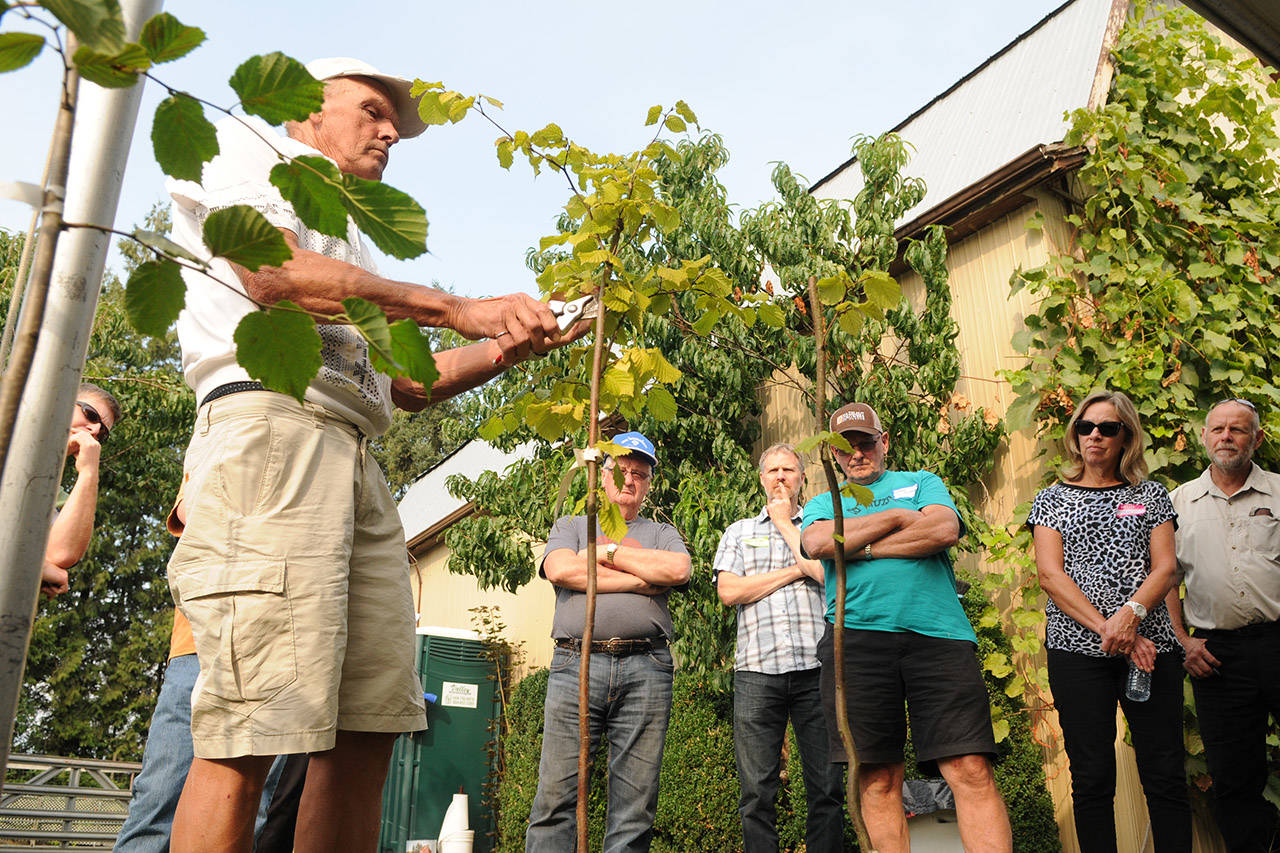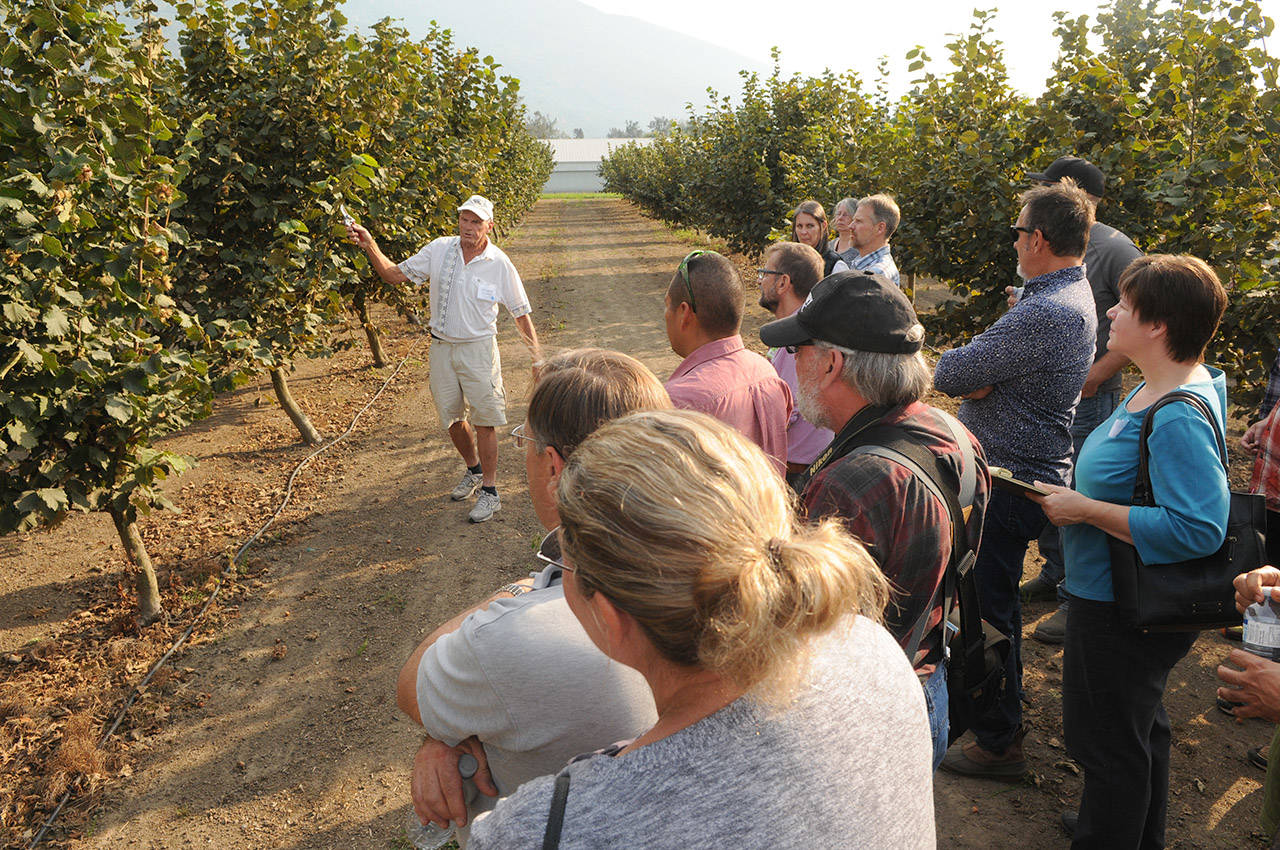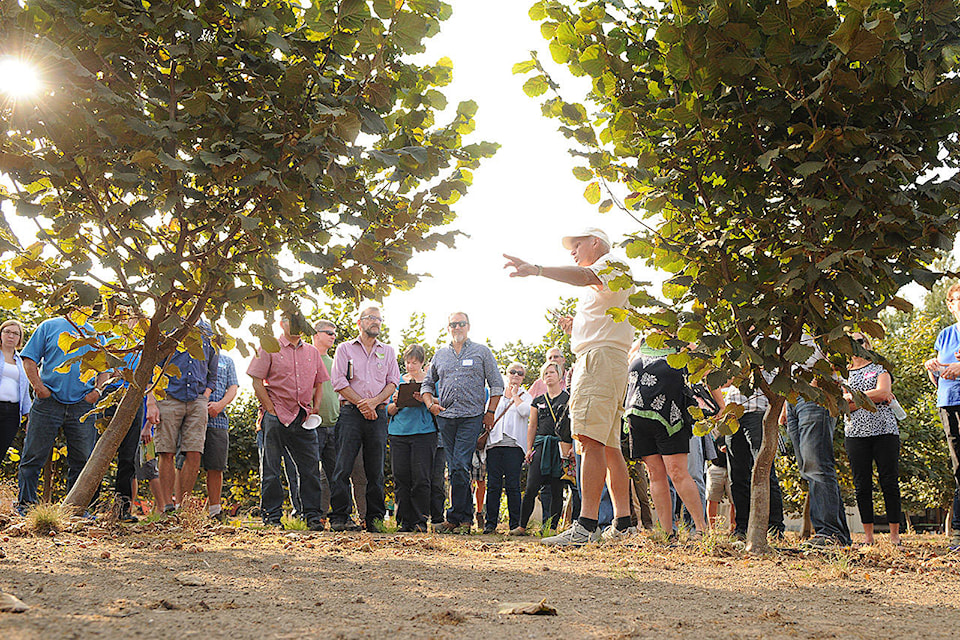Chilliwack hazelnut farmer Helmut Hooge has high hopes for the future of hazelnuts.
He hosted the BC Hazelnut Growers Association’s field day at his farm Saturday, showcasing the resurgence of hazelnut production in the Fraser Valley.
“There was a fair bit of interest,” he said. “Everyone was amazed at how big the trees were.”
READ MORE: Resuming hazelnut production
Hooge, former president of the BCHGA, was one of the farmers participating in trials of three distinct varieties of hazelnut trees, and their pollinators. And now he’s also glad to show how they’re doing.
Prospective and former hazelnut farmers, as well as agriculture students and profs, were among the crowd of more than 100 who showed up to the field day.
There were experts giving harvesting and pruning tips, as well as a tour of the fields.
The industry is starting to get re-established after being devastated by Eastern Filbert Blight. It first showed up in Chilliwack on 2008.
Everyone’s crops had to be removed and burned.
READ MORE: Industry decimated
But today the future looks a lot brighter.
So much so that it was Hooge’s hazelnuts from Chilliwack, that were specially ordered one year ago by Chef Ned Bell and served to Prince William and Kate, the Duke and Duchess of Cambridge, at a Taste of BC event in Kelowna.
The Fraser Valley has near ideal growing conditions, and not that many other places in the world can claim that.
“It’s our winter climate,” said Hooge.
Hazelnuts flower in the middle of winter, in January, as long as the temperatures are mild enough.
Some filbert farmers are starting over, like Hooge, having replanted with special blight-resistant varieties.
“Our industry wants to get back to where it once was in terms of production,” Hooge said. “We think there will be more acres planted in the years to come.”
In its heyday they had 1,200 acres in production. Now they’re aiming to get 1,000 acres going.
“We know the industry is going to grow again and it means that marketing is going to improve as well,” he said.
@chwkjourno
jfeinberg@theprogress.com
Like us on Facebook and follow us on Twitter.
